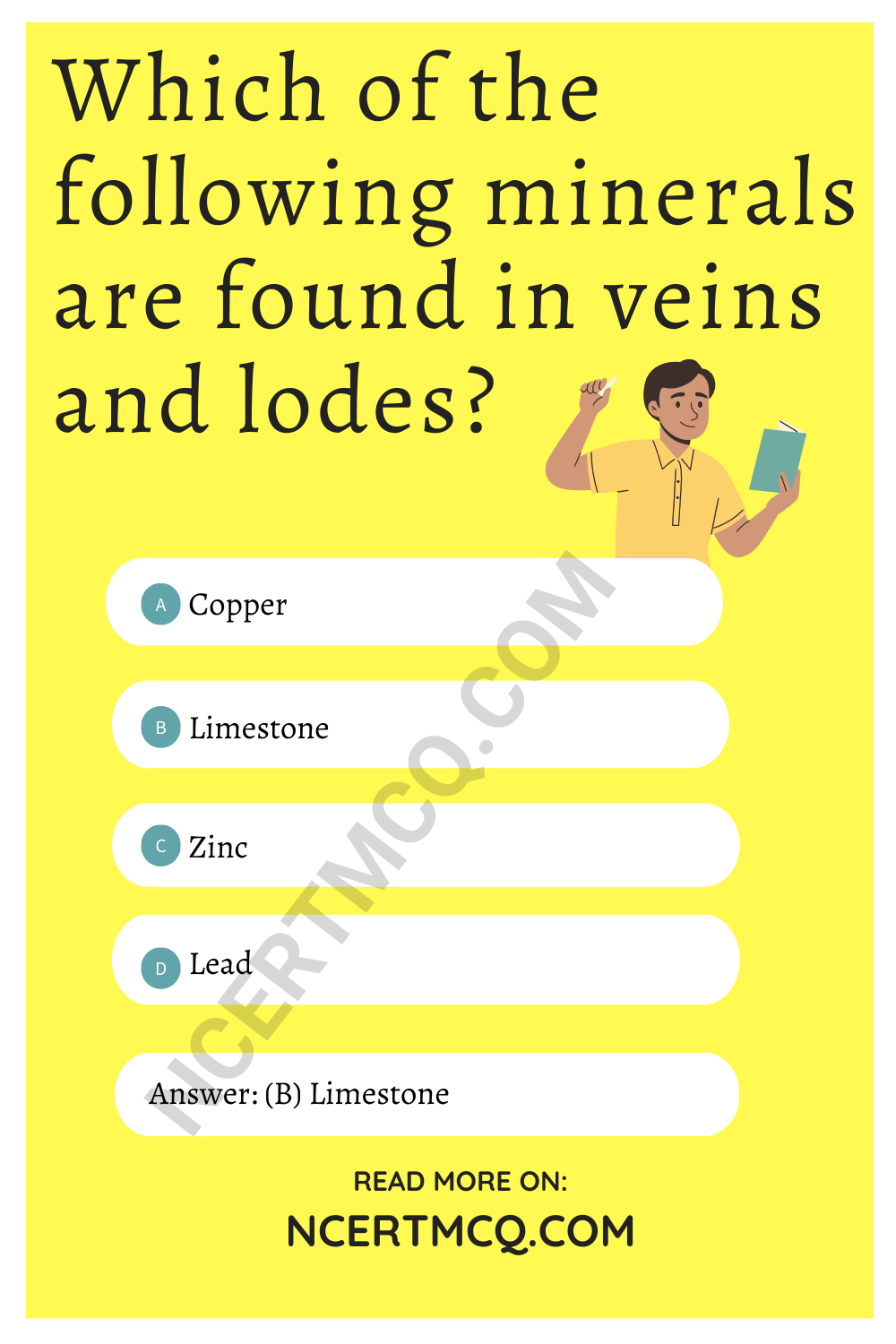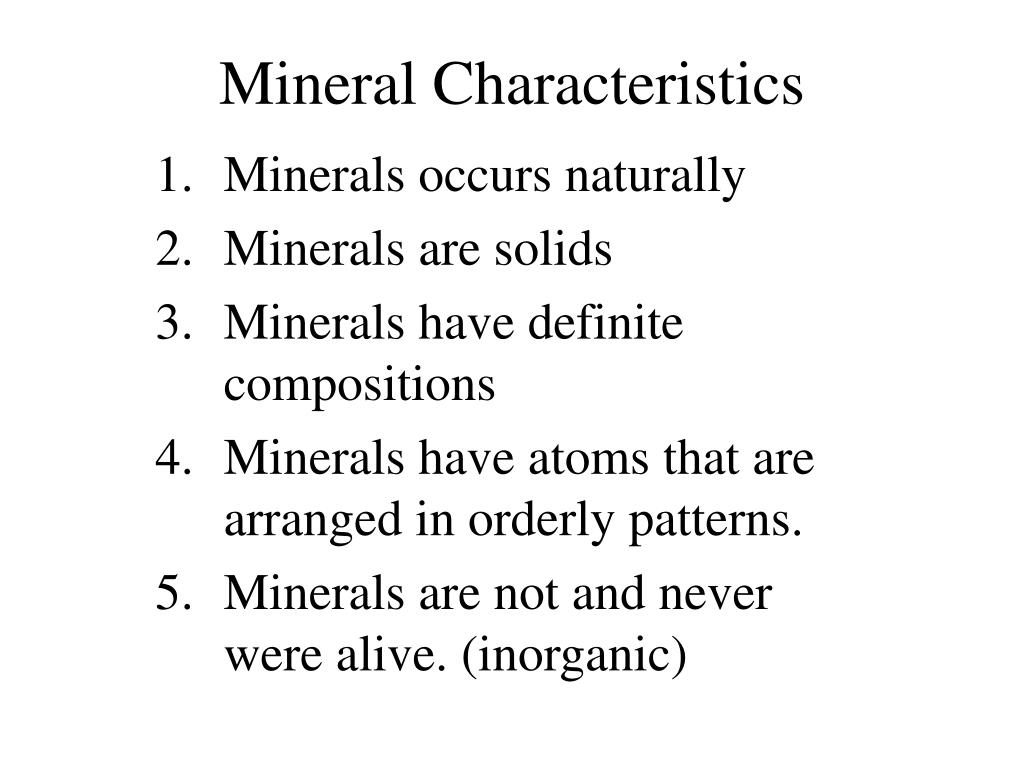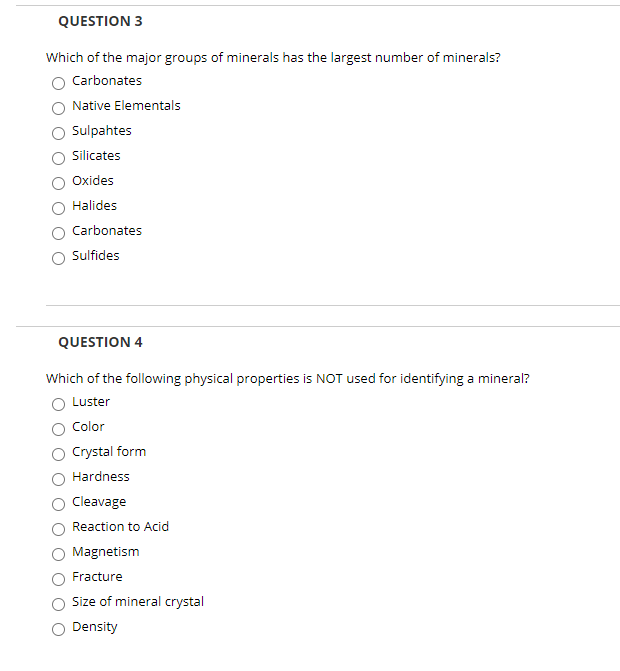Which One Of The Following Is Not True For Minerals

A surprisingly common query plagues online search engines: "Which one of the following is not true for minerals?" This seemingly simple question reveals a fundamental misunderstanding of mineralogy that could have significant implications for fields ranging from geology to resource management and even basic scientific literacy. The confusion underscores the need for clearer educational resources and public outreach efforts regarding the basic characteristics of minerals.
At its core, the question tests the understanding of the five key attributes that define a mineral. These include: being naturally occurring, being inorganic, having a characteristic chemical composition, possessing a highly ordered crystalline structure, and being solid. Failing to grasp these defining features can lead to misidentification of materials, flawed scientific interpretations, and potentially, incorrect decisions in areas like mining and environmental protection.
The Five Hallmarks of a Mineral
A true mineral must meet all five criteria. The absence of even one disqualifies a substance from being classified as a mineral. Let's delve deeper into each of these crucial aspects.
Naturally Occurring
Minerals are formed by natural geological processes. This excludes synthetic or man-made compounds, regardless of their chemical similarity to natural minerals. For instance, lab-grown diamonds, while chemically identical to naturally occurring diamonds, are not classified as minerals.
Inorganic
Minerals are not formed from living organisms or biological processes. Substances like coal and amber, which are derived from organic matter, are therefore not considered minerals. This distinction is rooted in the chemical structure and origin of the material.
Characteristic Chemical Composition
Each mineral has a defined chemical formula, although some variation is permitted within certain limits. For example, olivine can exist as a solid solution between forsterite (Mg2SiO4) and fayalite (Fe2SiO4), but its overall chemical nature remains within these defined bounds. This is crucial for identification purposes.
Highly Ordered Crystalline Structure
The atoms within a mineral are arranged in a specific, repeating pattern. This internal structure dictates the mineral's physical properties, such as its hardness, cleavage, and crystal shape. Amorphous substances like glass, which lack this organized structure, are not considered minerals.
Solid
Minerals exist in a solid state at standard temperature and pressure. Liquids and gases, regardless of their chemical composition, do not qualify as minerals. This is a fundamental property that distinguishes them from other forms of matter.
Common Misconceptions and Examples
The online question often presents scenarios designed to expose common misconceptions. Here are some frequently encountered examples that highlight how the five defining characteristics are applied in practice.
Example 1: "Is obsidian a mineral?" Obsidian is volcanic glass, formed from rapidly cooled lava. Because it lacks a crystalline structure, it is not considered a mineral, despite being naturally occurring and inorganic.
Example 2: "Is petroleum a mineral?" Petroleum is a naturally occurring liquid composed of hydrocarbons derived from organic matter. Its liquid state and organic origin disqualify it from being classified as a mineral.
Example 3: "Is ice a mineral?" Ice formed naturally in glaciers or snow is considered a mineral because it is a naturally occurring, inorganic solid with a crystalline structure (water molecules arranged in a specific pattern). However, artificially frozen ice is not technically a mineral. This is a subtle but important distinction.
Why This Matters
The correct understanding of what constitutes a mineral is essential for several reasons. Geologists rely on mineral identification for rock classification and understanding Earth's history. Mineralogists study mineral properties to discover new materials and technologies.
Furthermore, the mining industry depends on accurate mineral identification for resource exploration and extraction. Misidentification can lead to wasted resources and environmental damage. Environmental scientists also need to understand mineral properties to assess soil composition and water quality.
Addressing the Knowledge Gap
The prevalence of the "Which one of the following is not true for minerals?" question suggests a need for improved science education at all levels. Clearer definitions, more engaging teaching methods, and accessible online resources are crucial. Museums and science centers can also play a significant role in educating the public about mineralogy.
By emphasizing the five defining characteristics of minerals, we can empower individuals to better understand the natural world around them. Addressing this knowledge gap is crucial not only for scientific literacy but also for informed decision-making in a world increasingly reliant on mineral resources.










.webp)







